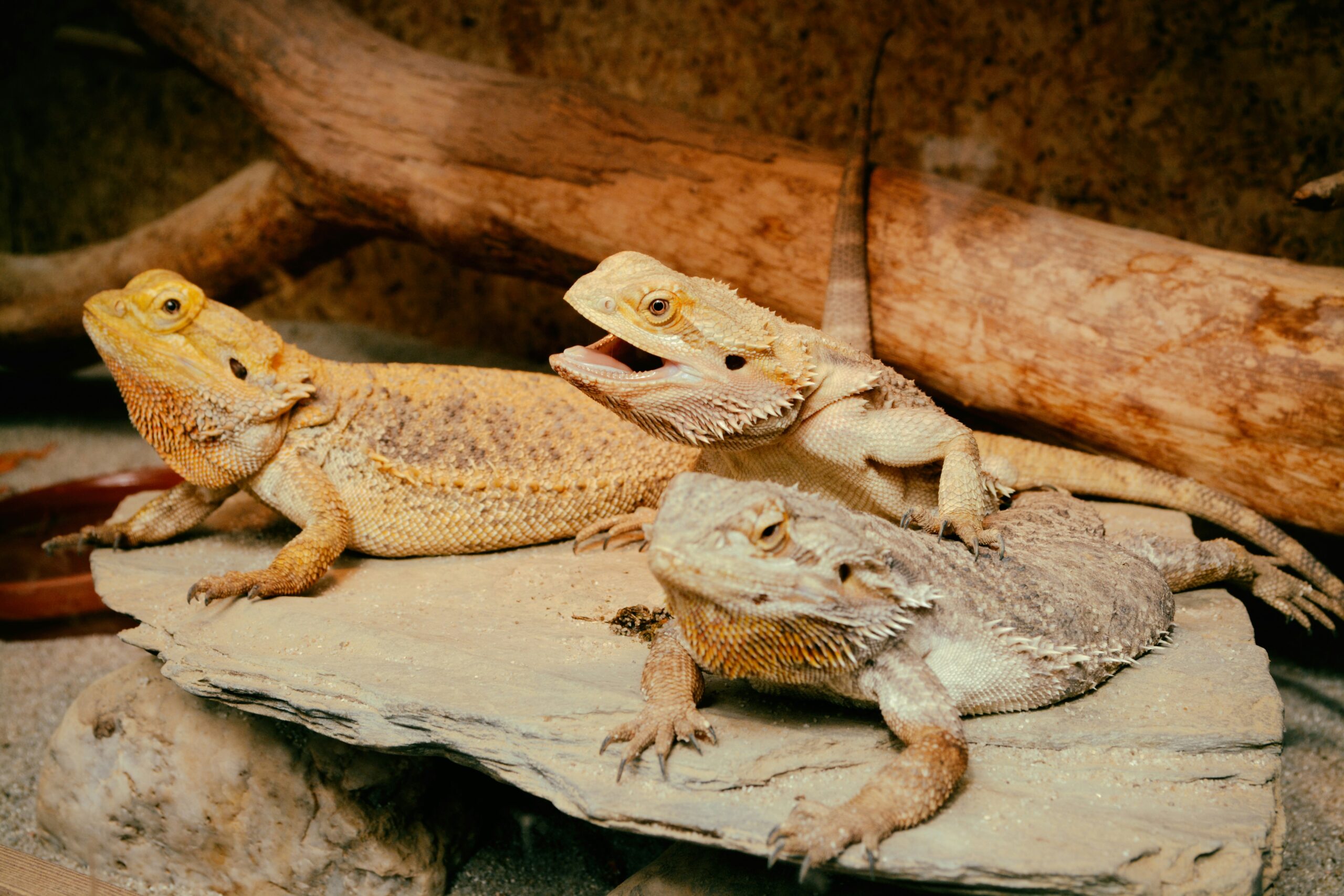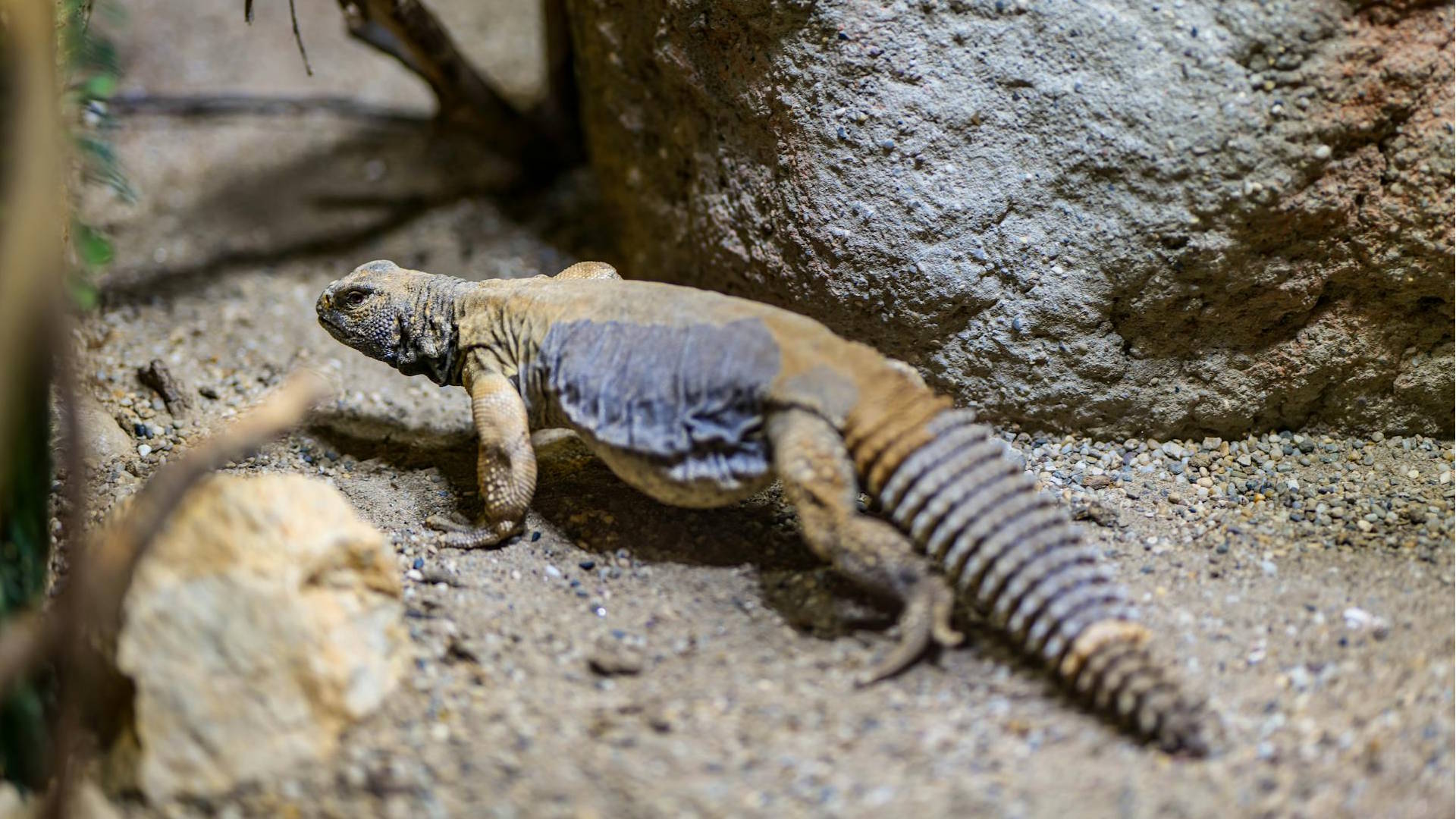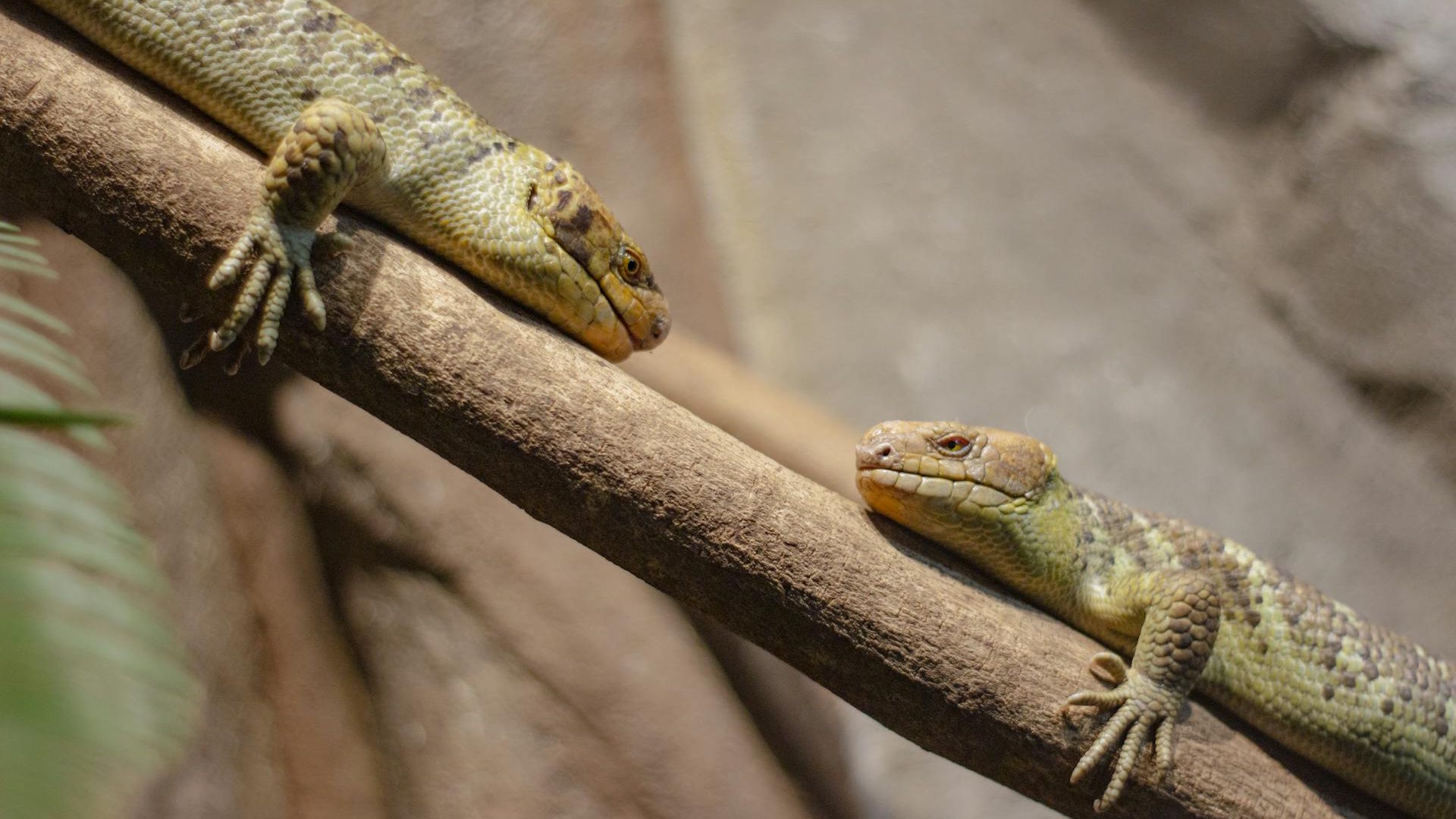Understanding Social Behavior in Lizards
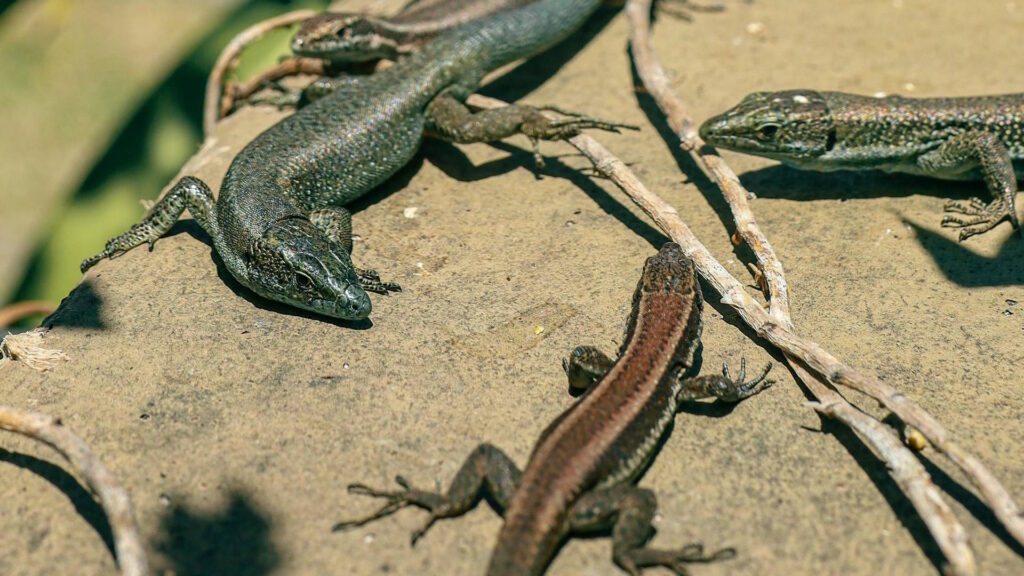
When we think of social animals, lizards rarely top the list. Traditionally, reptiles have been viewed as solitary creatures with limited social complexity, operating on instinct rather than social bonds. However, recent research has dramatically changed our understanding of reptilian social behavior. Several lizard species demonstrate surprisingly sophisticated social structures, including family bonds, cooperative hunting, and complex communication systems. This social behavior varies significantly across species, with some lizards actively seeking companionship while others maintain strict territorial boundaries. Understanding these social dynamics not only enriches our knowledge of animal behavior but also impacts how we approach lizard conservation and care in captivity.
Desert Night Lizards: Family-Oriented Reptiles
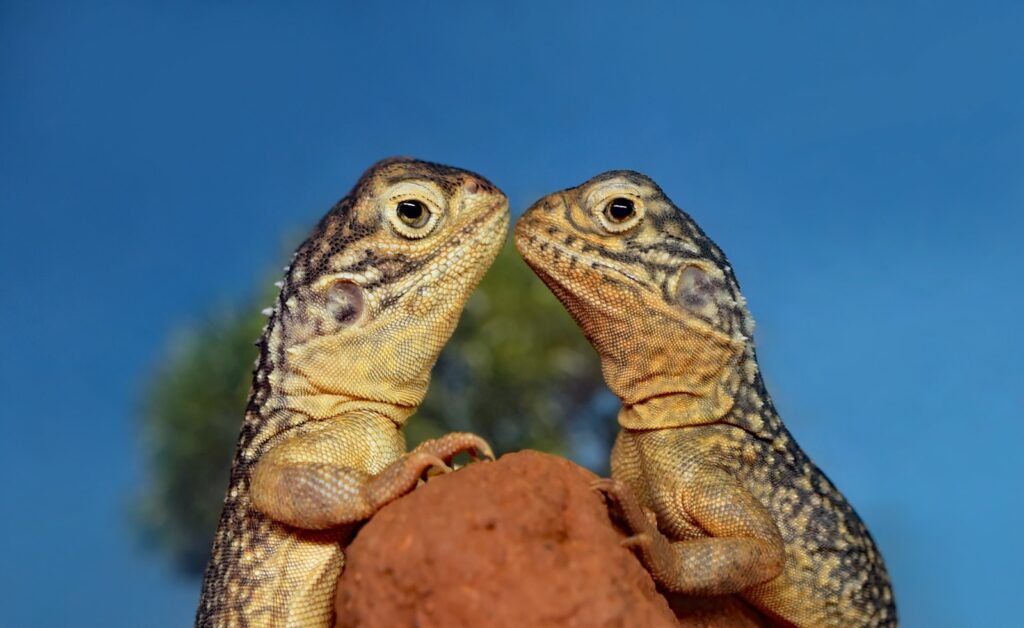
The Desert Night Lizard (Xantusia vigilis) stands out as one of the most socially complex lizard species, exhibiting remarkable family cohesion. These small lizards, native to the southwestern United States, live in family groups under fallen Joshua tree logs, with parents and offspring remaining together for extended periods. Research has shown that these lizards recognize their relatives, preferentially sharing space and thermoregulation opportunities with family members. Unlike most reptiles, juvenile Desert Night Lizards often remain with their parents for multiple seasons, creating multi-generational family units. This extended family structure provides advantages in harsh desert environments, including increased vigilance against predators and more efficient use of limited resources.
Prehensile-Tailed Skinks: The Monkey-Tailed Social Lizards
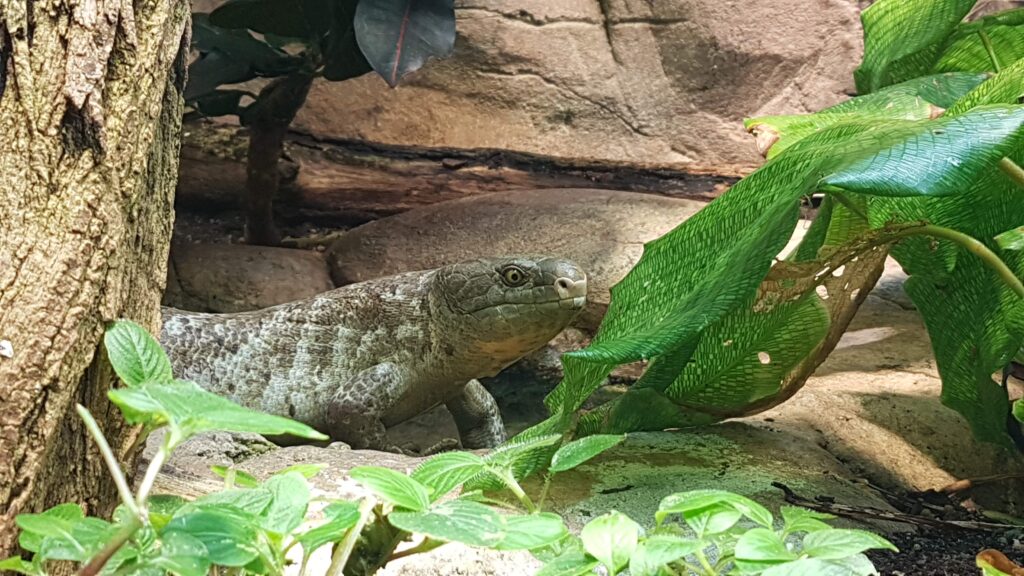
The Prehensile-Tailed Skink (Corucia zebrata), also known as the Solomon Islands Skink, exhibits one of the most developed social structures among lizards. These remarkable reptiles live in small family groups consisting of a mated pair and their offspring, remaining together for years in a stable social unit. Unlike most reptiles, these skinks demonstrate active parental care, with adults protecting their young and even “babysitting” while others forage. Their social nature extends to their physical interaction, as they frequently pile together in groups, maintaining physical contact during rest periods. Their herbivorous diet, unusual among lizards, may have contributed to the evolution of their social behavior, as it eliminates competition for meat and allows for communal living centered around plant food sources.
Green Iguanas: Complex Social Hierarchies
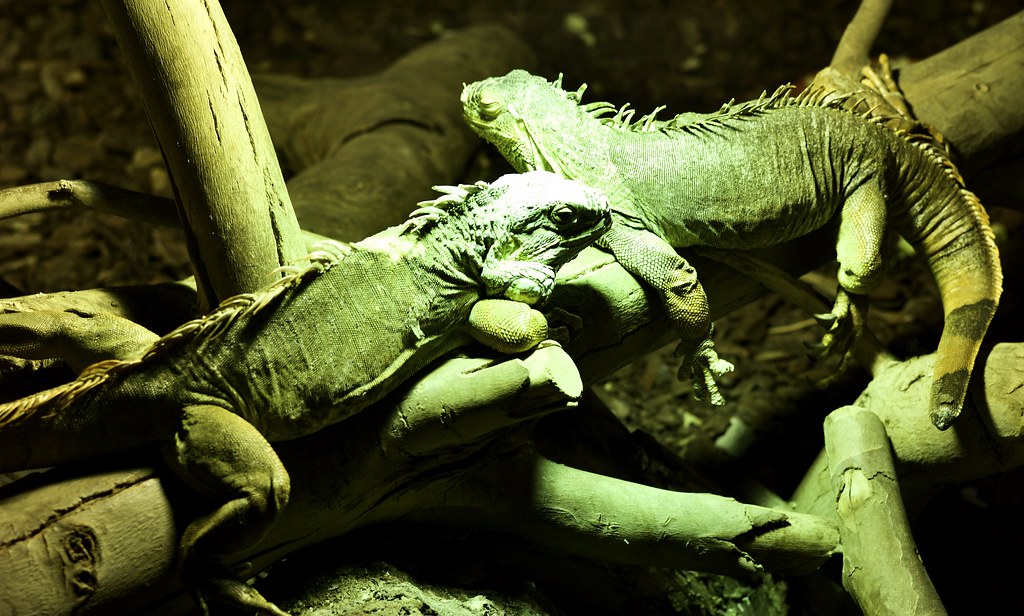
Green Iguanas (Iguana iguana) maintain intricate social structures built around dominance hierarchies that govern their interactions in the wild. These large lizards congregate in groups, particularly during breeding season when males establish territories and females gather in nearby areas. Within these groups, complex communication occurs through head bobs, dewlap displays, and specific body postures that signal status and intentions. Young iguanas often form loose social groups, basking and feeding together until sexual maturity introduces competitive behaviors. In captivity, Green Iguanas can recognize their human caretakers and other household pets, forming what appear to be social bonds beyond mere territorial tolerance. This capacity for social recognition makes them particularly interesting for studying reptilian cognition and social learning.
Gidgee Skinks: Australia’s Communal Lizards
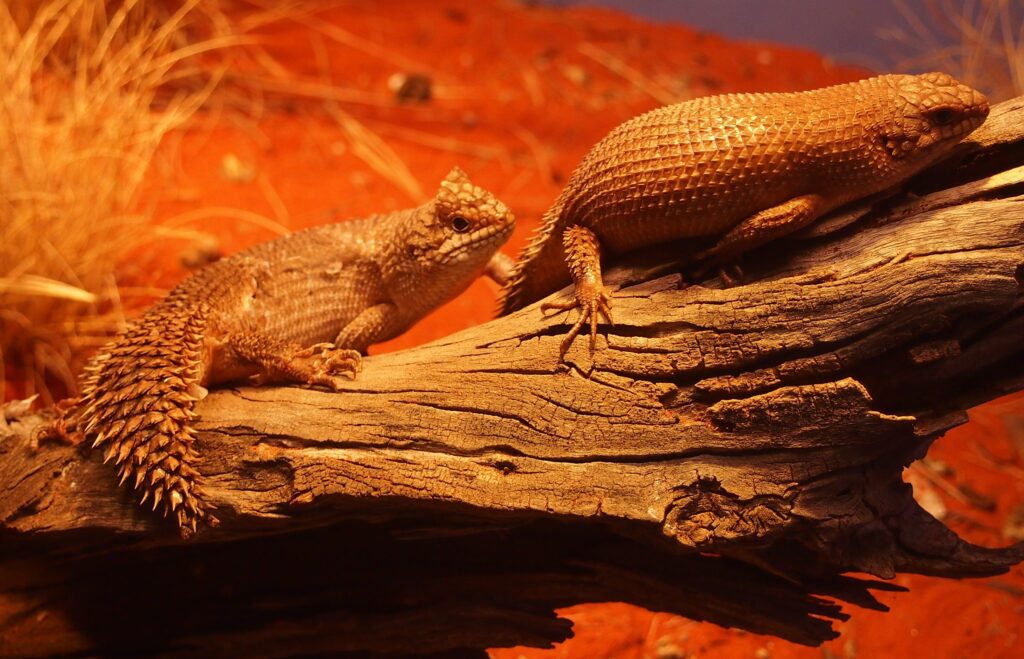
The Gidgee Skink (Egernia stokesii) represents one of Australia’s most social lizard species, forming stable family groups that have been observed to span multiple generations. These robust lizards live in rock crevices in family units consisting of a monogamous adult pair and their offspring from several breeding seasons. Remarkably, these family groups can contain up to 17 individuals, all sharing the same rocky retreat and maintaining social cohesion through chemical recognition. Juveniles benefit from this arrangement through increased protection from predators and access to prime basking spots. Research has documented these family bonds persisting for over seven years in the wild, suggesting deep social attachments rather than merely temporary aggregations.
Desert Iguanas: Seasonal Socialites
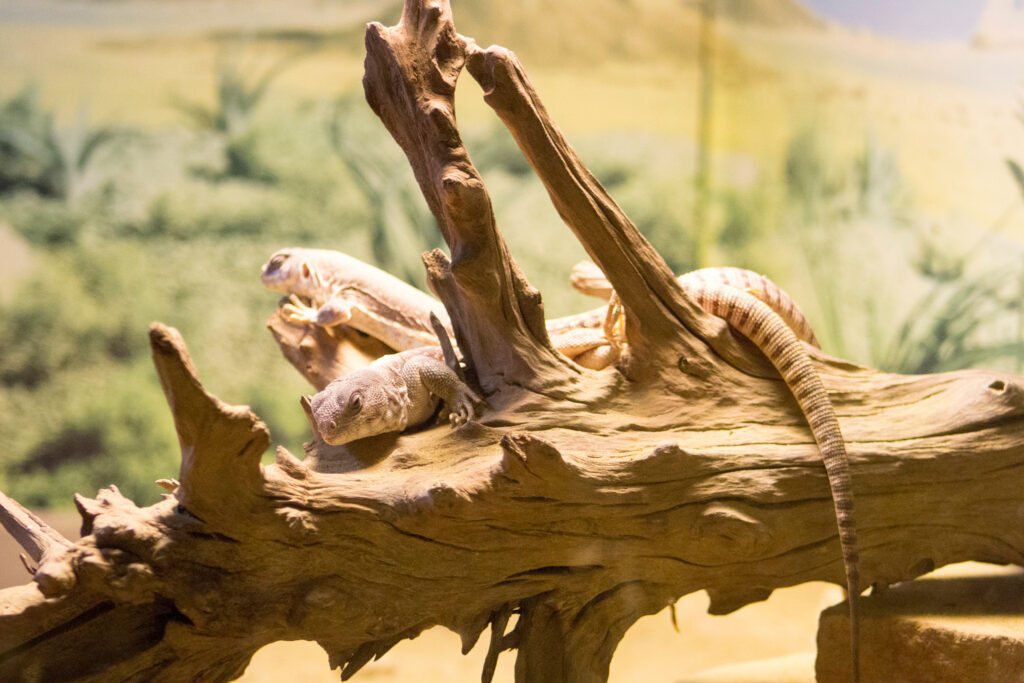
Desert Iguanas (Dipsosaurus dorsalis) display fascinating seasonal shifts in their social behavior, alternating between solitary and gregarious lifestyles depending on environmental conditions. During the breeding season, these normally territorial lizards gather in loose social groups for mating opportunities and access to limited resources. Young Desert Iguanas often form small bands, basking together and seeking safety in numbers while developing their survival skills. Their social interactions include elaborate communication displays, with specific head-bobbing patterns that convey different messages to potential mates versus territorial rivals. During harsh weather conditions, Desert Iguanas have been observed sharing burrows with conspecifics, suggesting that environmental pressures can override territorial instincts in favor of communal survival strategies.
Collared Lizards: Colorful Community Members
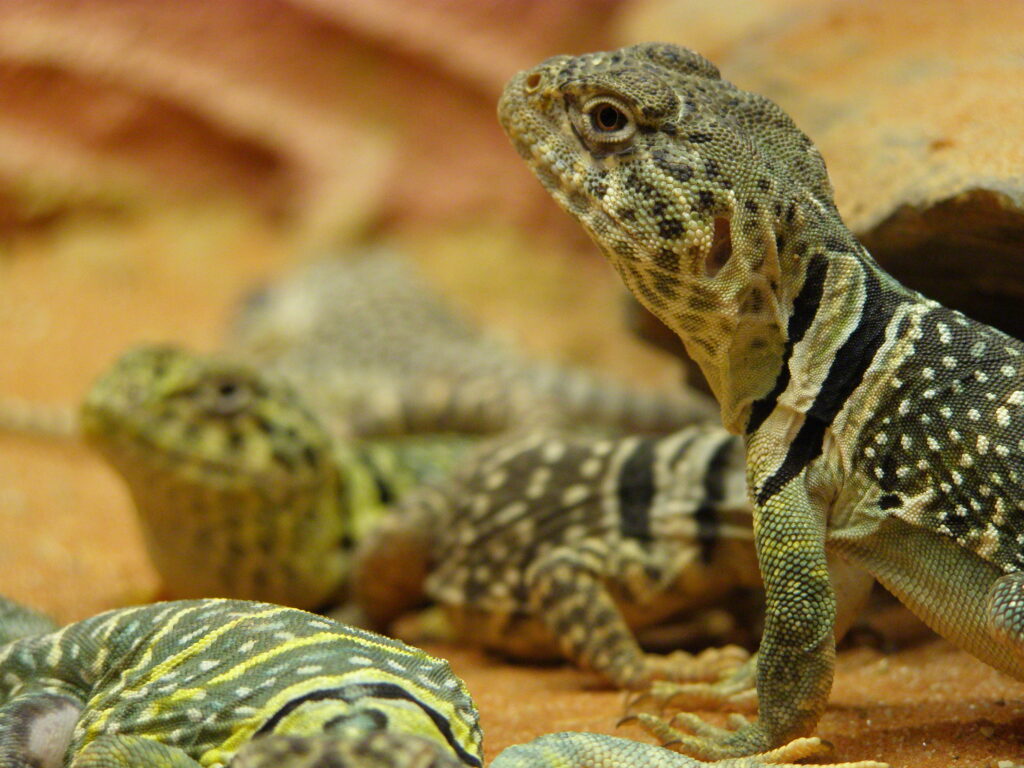
Collared Lizards (Crotaphytus collaris) exhibit a complex social structure centered around polygynous breeding groups in their rocky habitat across the southwestern United States. Males establish and vigorously defend territories that often include several females, creating small but structured social units. These strikingly colored lizards communicate through push-ups, head bobs, and dramatic color changes that signal social status and reproductive readiness. Young collared lizards form loose social associations, often basking in proximity and maintaining non-aggressive contact until reaching sexual maturity. Research has revealed that these lizards possess remarkable spatial memory regarding the territories of neighboring lizards, suggesting sophisticated social cognition that helps maintain community structure while minimizing costly physical confrontations.
Shingleback Skinks: Monogamous Marvels
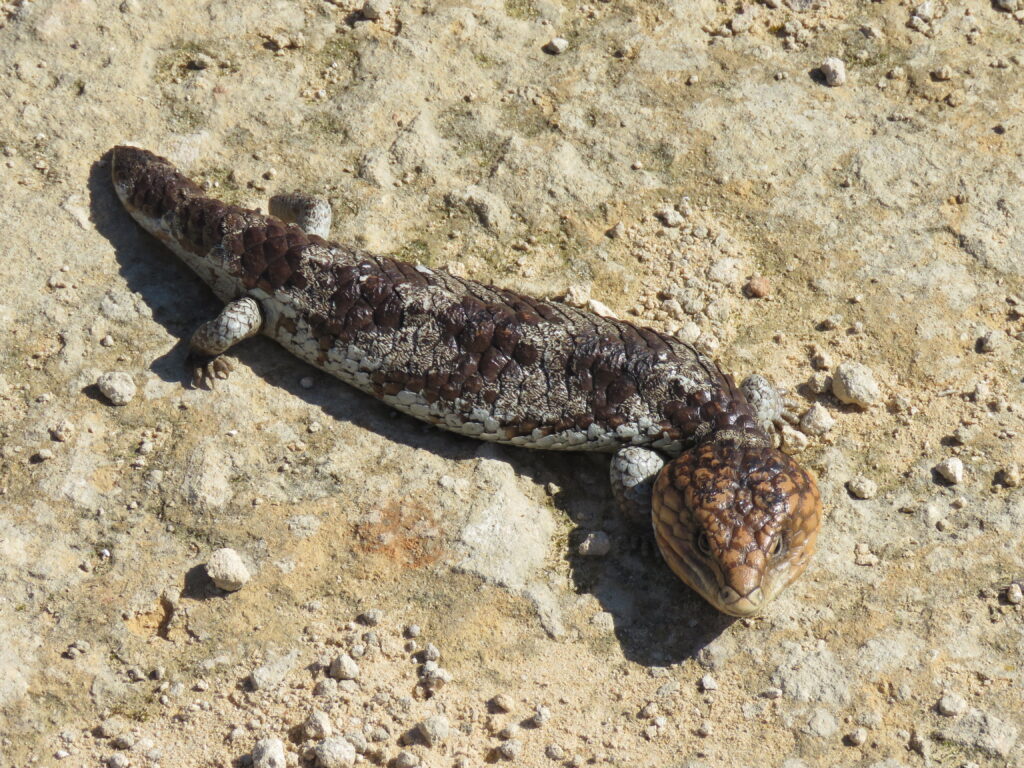
The Shingleback Skink (Tiliqua rugosa), also known as the Sleepy Lizard, demonstrates perhaps the most touching social bond among lizards through its lifelong monogamous partnerships. These Australian reptiles form pair bonds that can last for decades, with couples reuniting each breeding season after spending time apart. Tracking studies have shown that these lizards can recognize their specific partners after long separations and actively seek them out among other potential mates. During the breeding season, pairs travel together, often in physical contact, and coordinate their activities through chemical and visual communication. This exceptional monogamy, rare among reptiles, involves genuine mate recognition rather than simply returning to the same territory, suggesting emotional connections previously thought impossible in lizards.
Bearded Dragons: Social Learners
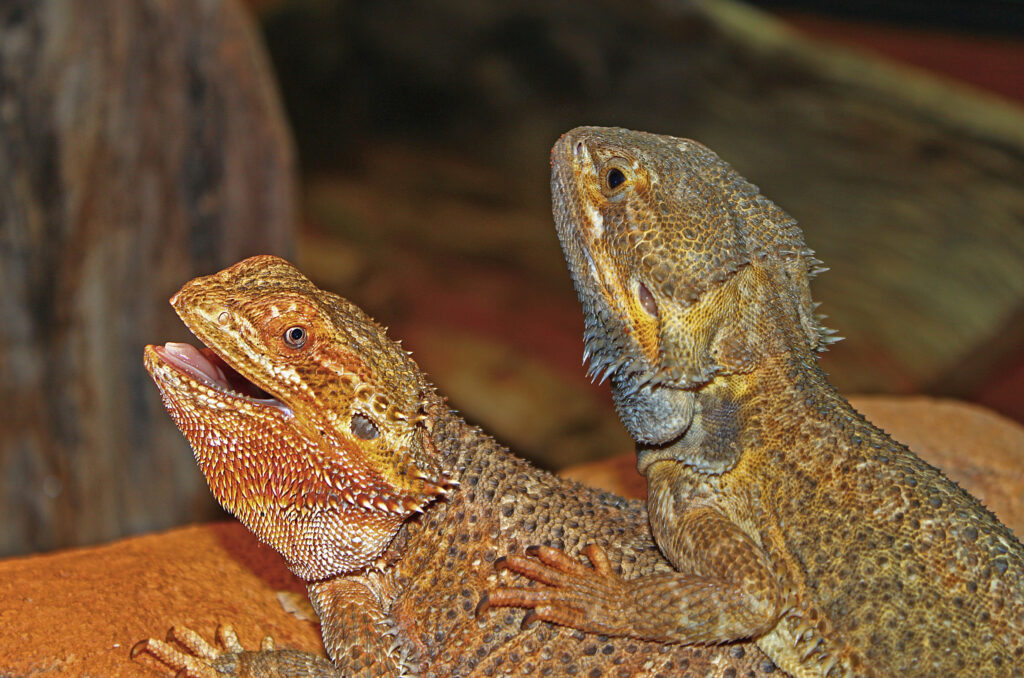
Bearded Dragons (Pogona vitticeps) have surprised researchers with their capacity for social learning and recognition, making them among the most socially adept lizard species. These popular pets can distinguish between familiar and unfamiliar conspecifics, showing preference for known individuals in both wild and captive settings. Young bearded dragons learn behaviors by watching others, including opening doors, finding food, and navigating environments – a form of observational learning once thought limited to mammals and birds. In the wild, juveniles often form loose aggregations for protection, while adults maintain a social dominance hierarchy communicated through beard displays, arm waving, and body posturing. This combination of social recognition and learning ability suggests cognitive capacities far more advanced than traditionally attributed to reptiles.
Nile Monitors: Unexpected Cooperation
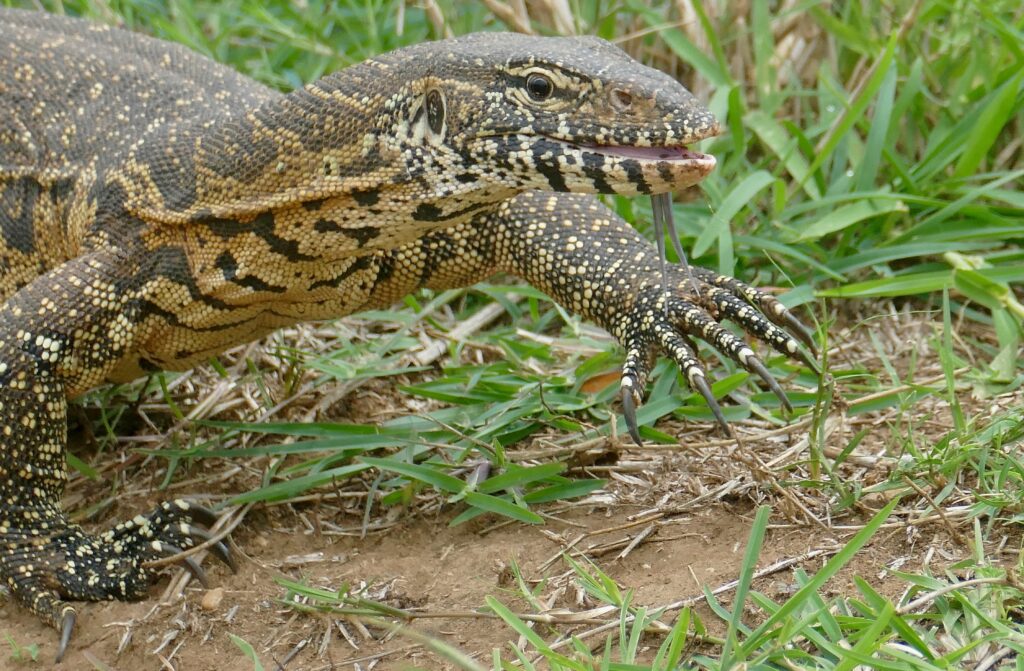
Nile Monitors (Varanus niloticus), despite their reputation as solitary predators, display surprising instances of social cooperation under certain circumstances. These large African lizards have been observed gathering in groups to exploit abundant food resources, such as seasonal fish concentrations or crocodile nesting sites where they feed on eggs. Young monitors sometimes travel in sibling groups for several weeks after hatching, potentially increasing survival rates through collective vigilance. More remarkably, there are documented cases of adult Nile Monitors cooperating during hunting expeditions, with individuals taking different positions to flush prey or block escape routes. This situational sociality challenges our understanding of reptilian behavior, suggesting that even traditionally solitary predators can develop cooperative strategies when environmental conditions favor group activities.
Five-Lined Skinks: Maternal Social Structures
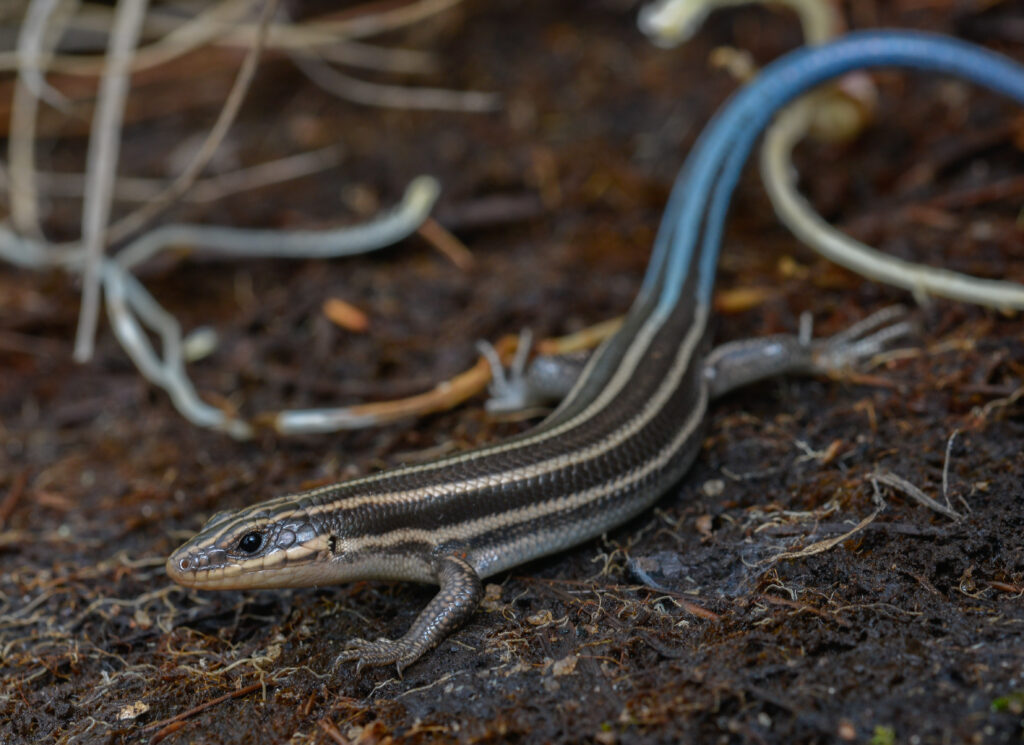
The Five-Lined Skink (Plestiodon fasciatus) exhibits unusual maternal social behavior, with females providing extended care to their eggs and newly hatched young. Unlike most lizard species that abandon their eggs after laying, female Five-Lined Skinks remain with their clutch throughout the incubation period, actively defending the nest and adjusting egg positions to optimize temperature and humidity. This maternal care continues briefly after hatching, with mothers guarding their young during their most vulnerable first days of life. During this period, juveniles remain in a loose social group centered around the mother, often returning to the nest site together for protection. This temporary family unit provides crucial survival advantages before the young eventually disperse to establish their own territories.
Great Desert Skinks: Underground Communal Living
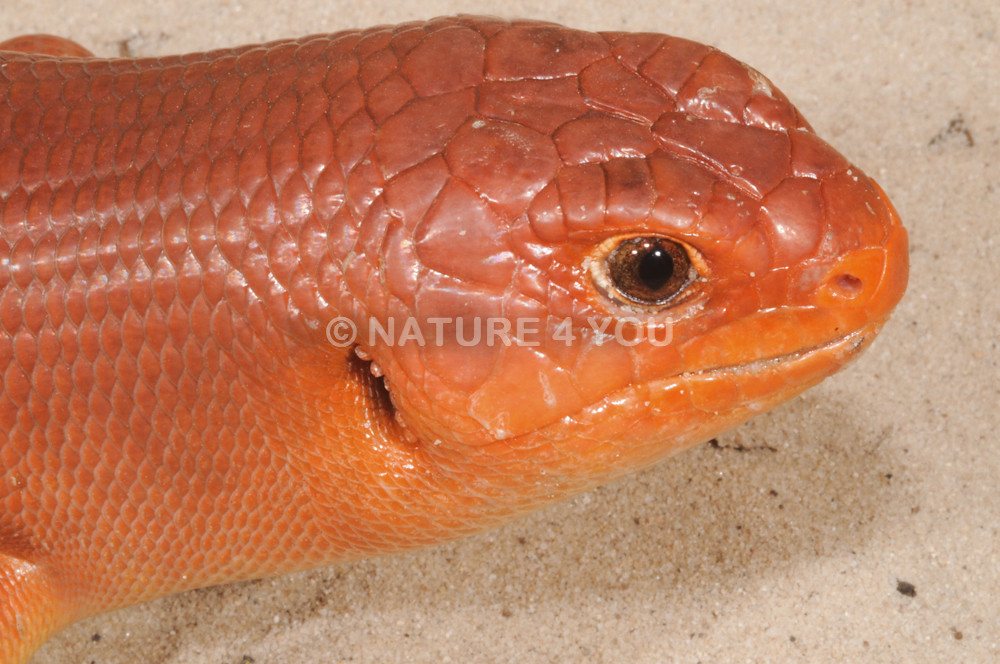
The Great Desert Skink (Liopholis kintorei) has developed one of the most complex social systems among lizards, creating elaborate underground tunnel networks that house extended family groups. These remarkable Australian reptiles construct and maintain burrow systems with multiple entrances, chambers, and escape tunnels that can span up to 20 meters across. A single burrow complex typically houses a monogamous adult pair along with offspring from multiple years, creating multi-generational family units that cooperatively maintain their shared home. Both parents participate in burrow construction and maintenance, teaching these skills to offspring through behavioral modeling. Genetic studies have confirmed that these family groups consist of closely related individuals, demonstrating true family cohesion rather than simply aggregations of convenience.
Implications for Lizard Conservation and Care

Understanding the social nature of certain lizard species has profound implications for both conservation efforts and captive care practices. For highly social species, preservation of family units and social structures may be as critical to conservation success as protecting individual animals or habitat. In captivity, housing naturally social lizards in isolation can lead to stress, abnormal behaviors, and poor health outcomes, while appropriate social groupings can enhance welfare and natural behaviors. Conservation programs for social lizards now increasingly consider preserving social dynamics when relocating populations or establishing breeding programs. For pet owners, recognizing the social needs of species like Bearded Dragons or Prehensile-Tailed Skinks can inform better housing decisions, enrichment strategies, and handling protocols that respect their natural social tendencies.
Conclusion: Redefining Reptilian Sociality
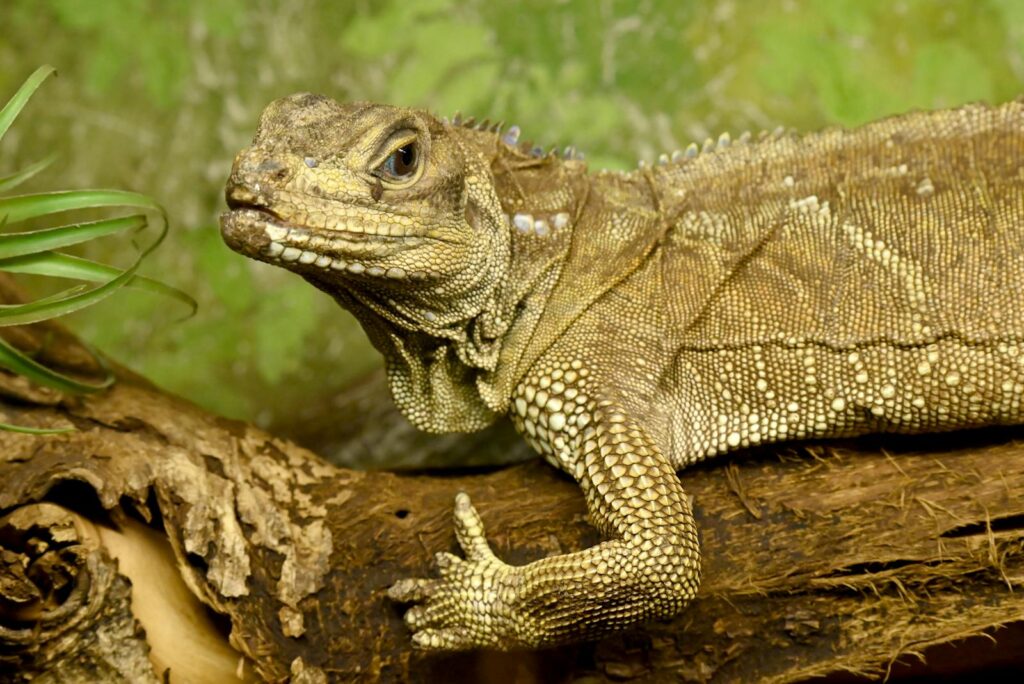
The diverse social behaviors exhibited by various lizard species challenge our traditional view of reptiles as primarily solitary, instinct-driven animals. From the lifelong bonds of Shingleback Skinks to the multi-generational family structures of Great Desert Skinks, these social adaptations reveal cognitive and emotional capabilities previously unrecognized in the reptile world. As research continues to unveil the complexity of lizard social structures, we’re forced to reconsider long-held assumptions about reptilian behavior and intelligence. These findings not only enhance our scientific understanding but also raise important ethical considerations about how we interact with, conserve, and care for these fascinating creatures. The social lives of lizards represent yet another reminder that the natural world’s complexity often exceeds our expectations, inviting continual discovery and reassessment of what we think we know about animal behavior.

